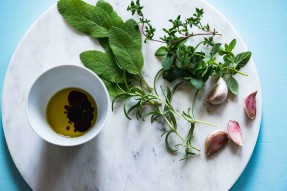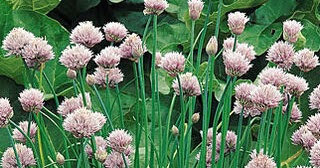They probably won’t have
the option to haul you out of a freezing lake, or convey you from a consuming
structure, however plants have likely spared your life, or if nothing else
caused you to feel a ton better.
That is on the grounds that, in any event in
the U.S., quarter of every single physician endorsed sedate originate from
substances that are discovered distinctly in plants.
We people have a long
history of utilizing plants to treat maladies. The vast majority of those
medicines were presumably discovered using incredibly good karma – like, by
individuals chomping on arbitrary leaves and perceiving how they felt.
On the
off chance that they discovered one that appeared to work, the knowledge would
normally get went around by listening in on others’ conversations, however some
of the time it would also be recorded.
That is the manner by which we wound up
with plans that are about as old as keeping in touch with itself – like the
multi year old Sumerian mud piece that lists 250 plants for planning meds.
Obviously, the plans don’t generally work, and there are a lot of old natural
cures that do literally nothing.
Be that as it may, a couple did work – we
despite everything utilize some of them in prescriptions today.
A considerable
lot of the plant-based substances people use has a place with a general
gathering of harsh tasting, nitrogen-containing mixes called alkaloids. These
mixes don’t appear to be strictly necessary for plants to endure,
so they
presumably offer trans formative rewards – like a defense against anything that
gives making a chomp an effort of it.
Their names generally end in I-n-e, and you’ve
probably previously knew about some of them, similar to caffeine, nicotine,
morphine… And a great deal of them has impacts on our bodies that are quite
solid … regardless.
Take the fatal nightshade, for instance. In 2009, a lady
was hospitalized from eating just six nightshade berries, which she thought
were blueberries.
Ten berries could have been fatal. One of the executioner
mixes in nightshades atropine, an alkaloid discovered everywhere throughout the
plant.
Yet, atropine likewise has a decent side – it’s actually on the World
Health Organization’s “Model List of Essential Medicines” in three
separate spots! Specialists can utilize it as a narcotic for short operations,
or to enlarge the students to increase simple access to the rear of the eye.
What’s more, in spite of being extricated from plants poisonous, atropine works
an antitoxin against specific kinds of harming!
A few pesticides and nerve
gases exhaust the parasympathetic sensory system, and atropine can counter that
dangerous impact by blocking the receptors these poisons over-actuate.
Other
valuable plant-based medications took a lot of hard science to make work – as
on account of an enemy of malarial medication called artemisinin.
The compound
originates from the sweet wormwood plant, and Youyou Tu, the substance engineer
who created it, was granted portion of the Nobel Prize for Medicine in 2015.
Utilizing plants to treat intestinal sickness isn’t a new thing. The ailment
has presumably killed half of all people from the Stone Age to today, and we
haven’t beaten it yet.
With such a large number of individuals enduring, especially
in creating nations, it’s not astounding individuals gone to plants for a fix.
Around the globe, in excess of 1200 plant species are used to treat intestinal
sickness and the fever that accompanies it. In any case, just a small amount of
these have been appropriately tried for their viability.
One of the principal
cures known to be genuinely effective was quinine, an alkaloid that originates
from the bark of Peruvian cinchona trees.
A compound known as chloroquine, which
was based on quinine, was later grown artificially as a more secure and
progressively powerful form of the drug.
In any case, it wasn’t some time
before the Plasmodium parasite that causes jungle fever began demonstrating
protection from chloroquine.
So individuals started looking for another option.
Tu and her group went to customary remedies from China.
They scoured a huge
number of customary plans for mixtures and drug that were said to diminish
fever, searching for the most encouraging plants. They found a reasonable
victor.
One plant – the sweet wormwood – appeared in a couple, yet several
distinct plans. Beginning trial of sweet wormwood separates on the jungle fever
parasite was promising, however conflicting.
A few analyses indicated sweet
wormwood to be exceptionally powerful, however others just somewhat.
Tu felt
that the varieties may be caused by contrasts in the manner the wormwood
extricate was readied, so she returned to the old texts to discover more hints.
The majority of the cures recommended processing dried leaves with bubbling
water, however Chinese rationalist Ge Hong, writing in the year 340CE, had an
alternate proposal.
He portrayed an arrangement procedure that used fresh, not
dried leaves, and included separating the juice by drenching those new leaves in
cold water, wringing them out, at that point drinking the juice straight down.
In light of this record, the group developed their own extraction strategy
utilizing ether, at that point tried it out on mice, monkeys, and finally
people.
Also, it worked! The better than ever separate executed off malaria
parasites not long after they entered their host’s red platelets, and with
moderately mild side impacts.
The dynamic compound was called artemisinin after
the plant it was found in.
The revelation of artemisinin made a whole new group
of ant malarial medicates that are as yet used to treat intestinal sickness
today.
At that point there’s diabetes, another illness that people have been
attempting to reward for quite a while.
Uncontrolled glucose levels in people
with diabetes can prompt intricacies like nerve harm, sight issues and kidney
disappointment.
Be that as it may, plants have our backs on this one, as well.
For the assessed 400 million individuals who have Type II diabetes, one of the
most broadly recommended medicines is metformin, a moderately simple molecule
that is comprised of only a couple of nitrogen, carbon, and hydrogen particles.
The account of metformin begins with a herb known as goat’s mourn, or teacher
weed. It remains over a meter high, with white, blue, or purple blossoms.
Educator weed has been utilized to oversee diabetes around the Middle East and
Europe since the middle Ages.
In the late 1800s, contemplates found that the
plant contained elevated levels of an alkaloid called guanidine.
At the point
when separated, guanidine worked incredible at decreasing glucose levels in
creatures, yet it was too harmful to even think about using in people.
So
scientists got the opportunity to work, attempting different adaptations of
guanidine that kept the glucose down, however without the entire poisoning
problem.
The outcome was metformin. Safe, effective and modest to make,
metformin is helping a great many individuals deal with their diabetes.
Notwithstanding its basic concoction structure and plenty of exploration, we
despite everything don’t generally have the foggiest idea how met forming
brings down glucose, or why it’s so powerful with scarcely any symptoms.
All in
all, what thanks do the American individuals give this life-sparing plant? We
slap it on the Noxious Federal Weed list! Yet, to be reasonable, that is on the
grounds that it’s an invasive species in the US.
It’s much less damaging when
it develops in the Middle East, Europe and Asia.
Not all plants are so normal,
however – infect, plants containing the key to much-required fixes may have
become wiped out before we had the opportunity to try and name them, not to
mention study them.
Also, we’ve verged on losing life-saving plants previously.
In 1987, for instance, a botanist named John Burley trekked through a bog woods
in Malaysia, gathering plant tests to concentrate back in the lab.
His
movements were a piece of bigger crucial find new medicines for various cancers,
just as HIV. One of these examples, labeled “Burley-and-Lee351” didn’t
slaughter malignancy cells, however it did an astounding activity of
forestalling HIV from replicating.
So the authorities high-followed it back to the
forest… just to think that its gone, chop down for kindling or building.
Concentrates from similar trees didn’t have a similar impact, since they were
somewhat various species. It was possibly rescued when a couple of trees of the
right species were found at the Singapore Botanical Gardens.
The medication is
called CalanolideA, and it’s presently in Phase II clinical preliminaries and
possessed by the neighborhood Malaysian government.
At that point there’s this
really easily overlooked detail – the Rosy Periwinkle.
It may seem as though
something that would bright at home in my terrace, yet it’s really local just
to Madagascar – however it will happily become anyplace warm.
The local
individuals of Madagascar utilized these periwinkle plants for a wide range of
infirmities. During the 1950s, analysts from Western pharmaceutical companies
contemplated the periwinkle and found that it contained some fairly wonderful
alkaloids.
Two of these, called vincristine and vinblastine are used to treat
particular kinds of malignant growth by preventing the phones from separating.
Vincristine has helped increment achievement rates in rewarding children with
leukemia from only 10% during the 1960s, to well over 80% today. Also,
vinblastine is frequently a center chemotherapy component for lymphoma – a
disease of the lymphatic framework – just as testicular cancer.
A wide range of
plants have astonishing substances locked away inside them.
So whenever you
stroll past a tree or blossom, give it apart on the leaf – accepting that,
dislike, prickly, or toxic to the touch-anything like that. You may look
somewhat abnormal, and the plant won’t see, yet it presumably merits it in any
case.


